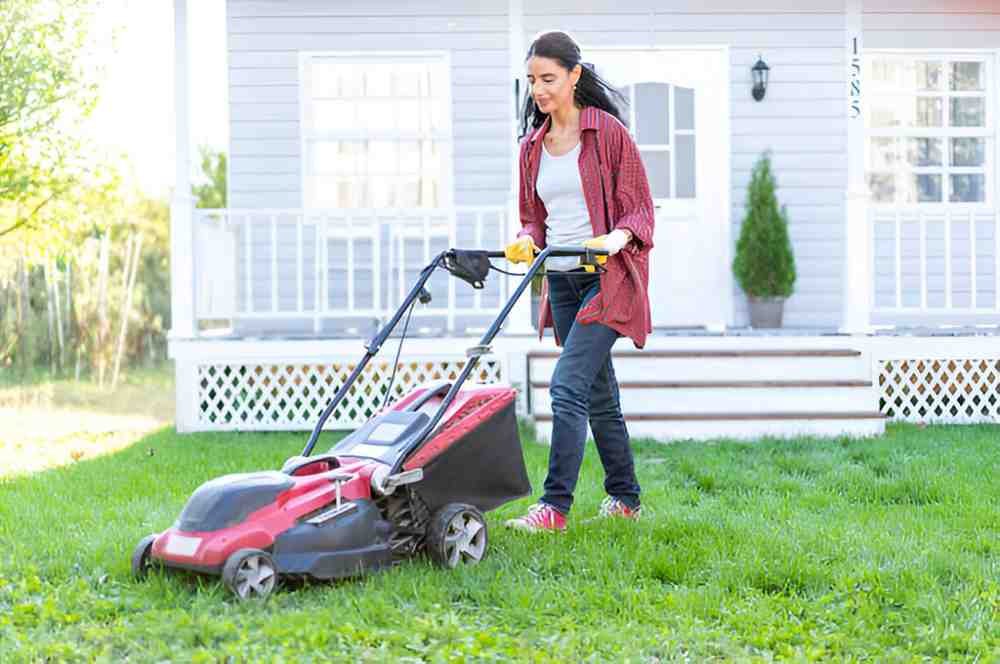When it comes to maintaining a beautiful lawn, a good lawn mower is one of the most essential tools you’ll need. Over the years, I’ve learned that choosing the right one for your yard is more complicated than simply picking the most popular or expensive model. The ideal lawn mower depends on factors like the size of your yard, the terrain, your personal preferences, and even your budget. In this guide, I’ll share what I’ve learned and provide practical advice on how to choose the best lawn mower for your specific needs.
Table of Contents
Why Lawn Mower Selection Matters
Before diving into the specifics of choosing a lawn mower, I want to explain why this decision matters. Not all mowers are created equal, and the wrong choice can lead to inefficiency, poor performance, and frustration. A lawn mower that suits your yard will not only save you time and effort, but it will also make your lawn look better. I’ve had experiences where selecting the wrong model led to uneven cutting, difficulty maneuvering, and even physical strain. I don’t want you to go through the same issues.
Types of Lawn Mowers
First, let’s talk about the different types of lawn mowers available. There are several options to choose from, each with its own set of benefits and drawbacks. Over time, I’ve tried and tested many, so I can break them down clearly for you.
1. Push Lawn Mowers
Push mowers are the simplest and most manual type. These require you to physically push the mower across your yard, which gives you complete control over the cutting process. They’re typically suited for smaller lawns.
Pros:
- Simple and affordable.
- Good exercise.
- Eco-friendly since they don’t use gas or electricity.
Cons:
- Harder to use on larger yards or uneven terrain.
- Takes more time and energy.
2. Self-Propelled Lawn Mowers
As the name suggests, self-propelled mowers do some of the work for you. These are perfect for larger yards, as they can help you mow the lawn more quickly and with less effort. You still control the direction and speed, but the mower moves on its own.
Pros:
- Less physically demanding.
- Faster mowing for larger areas.
Cons:
- More expensive than push mowers.
- May require more maintenance due to the engine.
3. Riding Lawn Mowers
For very large yards, riding mowers are a great choice. These are like mini tractors that you sit on while mowing the lawn. They are incredibly efficient for large areas but come at a higher price point.
Pros:
- Ideal for large lawns.
- Comfortable for long mowing sessions.
- Can handle rough terrain.
Cons:
- Expensive.
- Requires storage space.
4. Zero-Turn Mowers
Zero-turn mowers are similar to riding mowers but offer a greater range of motion. Their name comes from their ability to rotate 360 degrees, making them excellent for lawns with obstacles like trees, flower beds, or garden paths.
Pros:
- Extremely maneuverable.
- High speed and efficiency.
- Great for detailed mowing.
Cons:
- Expensive.
- Not ideal for very steep lawns.
5. Cordless Electric Lawn Mowers
Cordless electric mowers have become increasingly popular due to their ease of use and environmental benefits. They’re powered by rechargeable batteries and are quieter and cleaner than gas mowers. These are great for people with small to medium-sized yards.
Pros:
- Quiet and eco-friendly.
- No need for gas or oil.
- Easy to store and maintain.
Cons:
- Battery life may be limited.
- Less powerful than gas mowers.
6. Gas Lawn Mowers
Gas-powered mowers are the traditional option and still the best choice for many people, especially those with large lawns. They’re typically more powerful than electric mowers and can run for hours without the need for recharging.
Pros:
- Powerful and effective for larger lawns.
- Can run for extended periods.
Cons:
- Loud and produces exhaust fumes.
- Requires more maintenance (oil changes, gas refills).
How to Choose the Right Lawn Mower for Your Yard
Now that we’ve gone over the basic types of mowers, let’s dig into how to choose the best one for your yard. I’ve found that considering these factors helps narrow down the options.
1. Lawn Size
The size of your lawn plays a crucial role in determining which mower is right for you. Here’s how different sizes pair with various mowers:
| Lawn Size | Best Mower Type | Remarks |
|---|---|---|
| Small | Push Mower or Cordless Electric | Easy to maneuver and doesn’t require much power. |
| Medium | Self-Propelled Mower or Cordless Electric | Offers a balance of ease and efficiency. |
| Large | Riding Mower or Zero-Turn Mower | Reduces mowing time significantly and is perfect for large lawns. |
If your lawn is small (under 1,000 square feet), a push mower or a small cordless electric mower should suffice. For medium lawns (1,000 to 4,000 square feet), a self-propelled mower will give you a good balance of convenience and performance. For large lawns (over 4,000 square feet), consider a riding or zero-turn mower.
2. Terrain
The terrain of your yard can also influence which mower works best. If your yard has steep slopes or uneven ground, you’ll need a mower that can handle the incline and provide stability. Here’s how to think about terrain when choosing:
| Terrain Type | Recommended Mower Type | Remarks |
|---|---|---|
| Flat, even ground | Any type (push, self-propelled, or riding) | Easier to mow, so all mower types work well. |
| Hilly or rough ground | Self-propelled, Zero-turn, or Riding mower | A mower with good traction and power will help navigate uneven surfaces. |
| Obstacles or tight spaces | Push, Self-Propelled, or Zero-Turn mower | Zero-turn mowers excel in tight spaces, but push mowers can be effective as well. |
3. Maintenance
If you’re like me and prefer to spend less time maintaining your lawn mower, you’ll want to consider ease of upkeep. Electric mowers, whether cordless or corded, tend to require less maintenance than gas-powered ones. Gas mowers, on the other hand, need regular oil changes, air filter replacements, and spark plug checks.
4. Power Source
The power source is another significant factor. Gas-powered mowers are powerful and last long, but they come with the noise, fumes, and the need for regular refueling. Electric mowers (both corded and cordless) are quieter and cleaner, but their performance can sometimes lag, especially on larger lawns.
Here’s a quick comparison of power sources:
| Power Source | Pros | Cons |
|---|---|---|
| Gas | Powerful, long-lasting, good for large yards | Noisy, requires gas and oil, produces fumes |
| Corded Electric | Quiet, no refueling, eco-friendly | Limited range due to cord length |
| Cordless Electric | Quiet, no cord, eco-friendly | Battery life may be limited, less powerful |
5. Budget
Finally, consider your budget. Mowers range in price from under $100 for basic push mowers to over $3,000 for high-end zero-turn or riding mowers. Here’s how to approach the price range:
| Price Range | Best Mower Type | Remarks |
|---|---|---|
| Under $200 | Push Mower or Cordless Electric | Great for small lawns. |
| $200-$600 | Self-Propelled Mower or Mid-range Electric | Good for medium-sized lawns and offers great value for the price. |
| Over $600 | Riding Mower or Zero-Turn Mower | Excellent for large lawns but can be a significant investment. |
Final Thoughts
Choosing the right lawn mower depends on your specific needs and preferences. I recommend starting by assessing your lawn size, terrain, and how much effort you want to put into maintenance. From there, you can choose the type that will best suit your yard. The right mower makes all the difference in keeping your lawn looking its best with minimal effort.
I hope this guide helps you make an informed decision. Remember, there’s no one-size-fits-all answer, but with careful consideration, you’ll be able to select a mower that works for you. Happy mowing!





